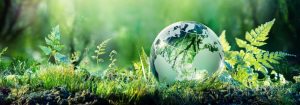Crystal Peirce
Introduction

Our world is a place of natural beauty and wonder. It is rich in complex living layers – from the soil below our feet to the nature that surrounds us to the air above us, this living, breathing system is based on a delicate balance. This balance depends on the careful movement of nutrients like water, carbon, and energy in and through living and non-living things around us. A web of life hangs in this balance and it doesn’t take much to upset it. Humans are one of the greatest agents of change this planet has ever seen. Our unsustainable use of natural resources, exponentially growing population, and patchwork of environmental policies have put our environment at risk. The risk is greatest for the rich and diverse types of living things, but our own behaviors are also putting human populations at risk. Climate change and pollution are putting a strain on our water resources making it harder to feed our ever growing population. Our destruction of habitats not only means we lose species, but also the potential for discoveries in medicine, agriculture, and industry that may be key to our survival.
Amidst the challenges there are opportunities. There is a path forward where we can meet the needs of humans and also protect the environment. There are changes to be made at every level, including international cooperation, challenging standard business practices, and even promoting individual behaviors. The environmental biology courses at Harper College are meant to inform students about the problems the planet faces but also to highlight the continual progress being made to protect and preserve what we can. The topics found in this book cover the basics of environmental biology and along with supplemental information provided by your instructor, should give you a solid foundation to begin your studies.

